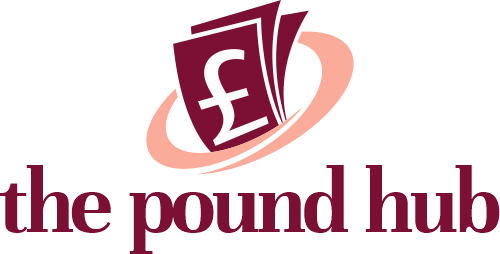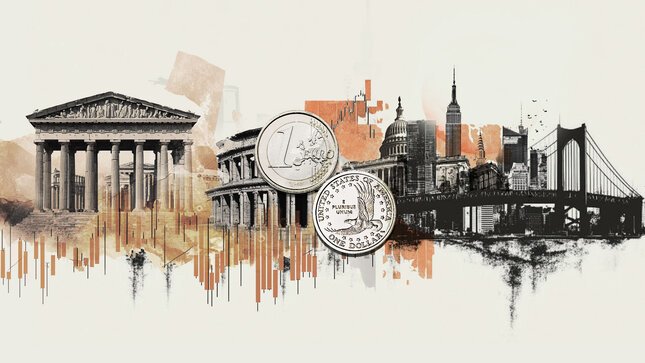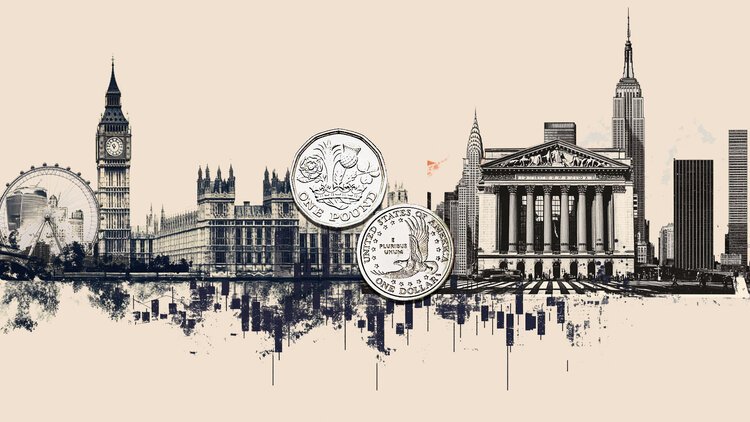EUR/USD clinched its fourth consecutive daily pullback on Wednesday, accelerating its recent break below the 1.1600 support and revisiting the area of two-week lows near 1.1530.
In the meantime, the pair’s downward bias follows another solid performance in the Greenback, which in turn lifts the US Dollar Index (DXY) past the significant 100.00 barrier as the risk aversion continues to dominate the sentiment alongside declining US Treasury yields across the board.
Shutdown ends, but only temporarily
Washington has finally wrapped up the 43-day shutdown, though calling it a resolution might be generous. Congress only funded the government through January 30, so the countdown to the next showdown has already started.
This round also flipped the usual dynamic: It’s typically Republicans driving budget brinkmanship, but this time Democrats pushed the confrontation. And almost lost in the noise? The fact that the national debt is now around $38 trillion and rising by roughly $1.8 trillion a year.
Senate Democrats argued that the economic fallout, including delayed benefits, missed paycheques, and stalled services, was worth it if it forced a conversation about rising health insurance costs affecting about 24 million Americans. Republicans, meanwhile, took the line usually associated with Democrats: that the economic damage wasn’t worth the standoff.
The shutdown also left the Federal Reserve (Fed) and markets flying partially blind, with key economic data releases frozen just as policymakers were trying to gauge the health of the US economy.
A pause, for now, in US–China tensions
After months of tit-for-tat escalation, Presidents Donald Trump and Xi Jinping finally sat down in South Korea in late October, giving markets a rare breather. The two agreed to extend the current truce in the US–China trade war. It’s not a breakthrough, but at least it stops things deteriorating further.
After the meeting, Trump said the US would roll back some tariffs, while China agreed to resume soybean buying, maintain rare-earth exports and step up cooperation on fentanyl controls.
Beijing later confirmed the ceasefire would run for another year. It doesn’t solve the underlying issues, but it does show both sides are, for now, opting for dialogue over fresh escalation.
The Fed sticks with caution
The Fed delivered exactly what markets expected at its October 29 event : a 25 basis points rate cut and the restart of modest Treasury purchases aimed at easing money-market pressures.
The vote came in at 10–2, taking the target range down to 3.75%–4.00%. Officials framed the cut as a precaution rather than the start of a more aggressive easing cycle.
Fed Chair Jerome Powell highlighted the wide range of views within the Federal Open Market Committee (FOMC) and warned markets not to assume a December cut is guaranteed.
From the latest Minutes, a split Fed went ahead with a rate cut last month, even as some policymakers warned that easing too soon could jeopardise efforts to bring inflation back under the 2% goal, a target that’s been missed for more than four years.
At this point, markets are pencilling in a little over 10 basis points more easing by year-end and roughly 85 basis points by end-2026, though all of that could shift once the backlog of delayed data on jobs, inflation and broader activity finally gets released.
ECB content to sit tight
Across the Atlantic, the European Central Bank (ECB) kept rates on hold at 2.00% for a third consecutive meeting. With growth and inflation both sitting close to target, and following 200 basis points of cuts earlier this year, rate setters see little reason to adjust policy again.
ECB President Christine Lagarde acknowledged that global risks have eased a touch thanks to the US–China truce and partial US tariff rollbacks, but she was equally clear that uncertainty remains high.
Market pricing now implies almost 6 basis points of additional easing by end-2026, effectively signalling that traders think the ECB is done for the foreseeable future.
Tech corner
The selling pressure has remained well in place around EUR/USD in the last few days, opening the door to a potential test of its monthly troughs near 1.1470 sooner rather than later.
The continuation of the downtrend is expected to meet its next support of note at the November floor at 1.1468 (November 5), while the loss of this region could put the August base at 1.1391 (August 1) back on the radar, an area also propped up by the key 200-day SMA (1.1393). A deeper decline could expose a visit to the weekly low at 1.1210 (May 29), seconded by the May trough at 1.1064 (May 12).
In contrast, bulls aim to retest the November peak at 1.1656 (November 13), which appears reinforced by both the provisional 55-day and 100-day SMAs. Up from here emerge weekly tops at 1.1668 (October 28) and 1.1728 (October 17), ahead of the October ceiling at 1.1778 (October 1).
When it comes to momentum indicators, they seem to bolster further weakness. That said, the Relative Strength Index (RSI) recedes to around 45, while the Average Directional Index (ADX) near 13 suggests a pale trend for now.
-1763579441659-1763579441659.png&w=1536&q=95)
Big picture
EUR/USD is still moving in a well-known range, waiting for something substantial to shake it out of its holding pattern. A shift in the Fed’s tone, a broader improvement in global risk appetite, or firmer demand for Eurozone assets relative to US ones could all act as catalysts. For now, though, the Greenback remains firmly in the driver’s seat.
Fed FAQs
Monetary policy in the US is shaped by the Federal Reserve (Fed). The Fed has two mandates: to achieve price stability and foster full employment. Its primary tool to achieve these goals is by adjusting interest rates.
When prices are rising too quickly and inflation is above the Fed’s 2% target, it raises interest rates, increasing borrowing costs throughout the economy. This results in a stronger US Dollar (USD) as it makes the US a more attractive place for international investors to park their money.
When inflation falls below 2% or the Unemployment Rate is too high, the Fed may lower interest rates to encourage borrowing, which weighs on the Greenback.
The Federal Reserve (Fed) holds eight policy meetings a year, where the Federal Open Market Committee (FOMC) assesses economic conditions and makes monetary policy decisions.
The FOMC is attended by twelve Fed officials – the seven members of the Board of Governors, the president of the Federal Reserve Bank of New York, and four of the remaining eleven regional Reserve Bank presidents, who serve one-year terms on a rotating basis.
In extreme situations, the Federal Reserve may resort to a policy named Quantitative Easing (QE). QE is the process by which the Fed substantially increases the flow of credit in a stuck financial system.
It is a non-standard policy measure used during crises or when inflation is extremely low. It was the Fed’s weapon of choice during the Great Financial Crisis in 2008. It involves the Fed printing more Dollars and using them to buy high grade bonds from financial institutions. QE usually weakens the US Dollar.
Quantitative tightening (QT) is the reverse process of QE, whereby the Federal Reserve stops buying bonds from financial institutions and does not reinvest the principal from the bonds it holds maturing, to purchase new bonds. It is usually positive for the value of the US Dollar.







